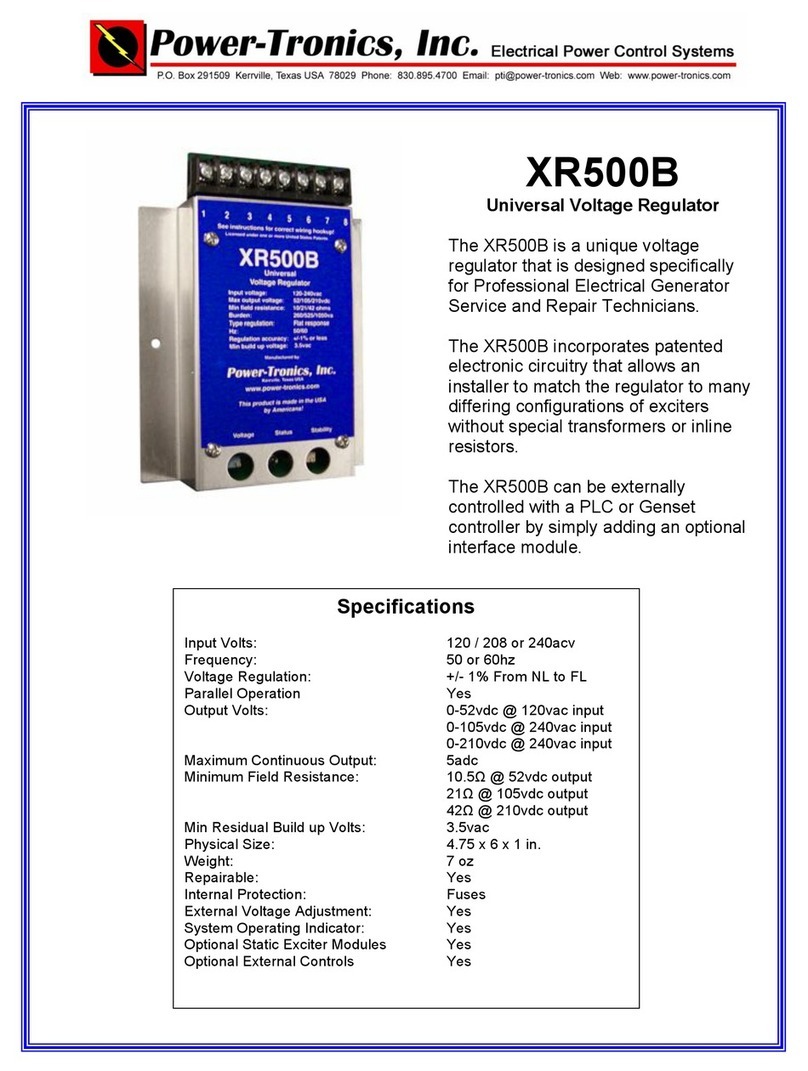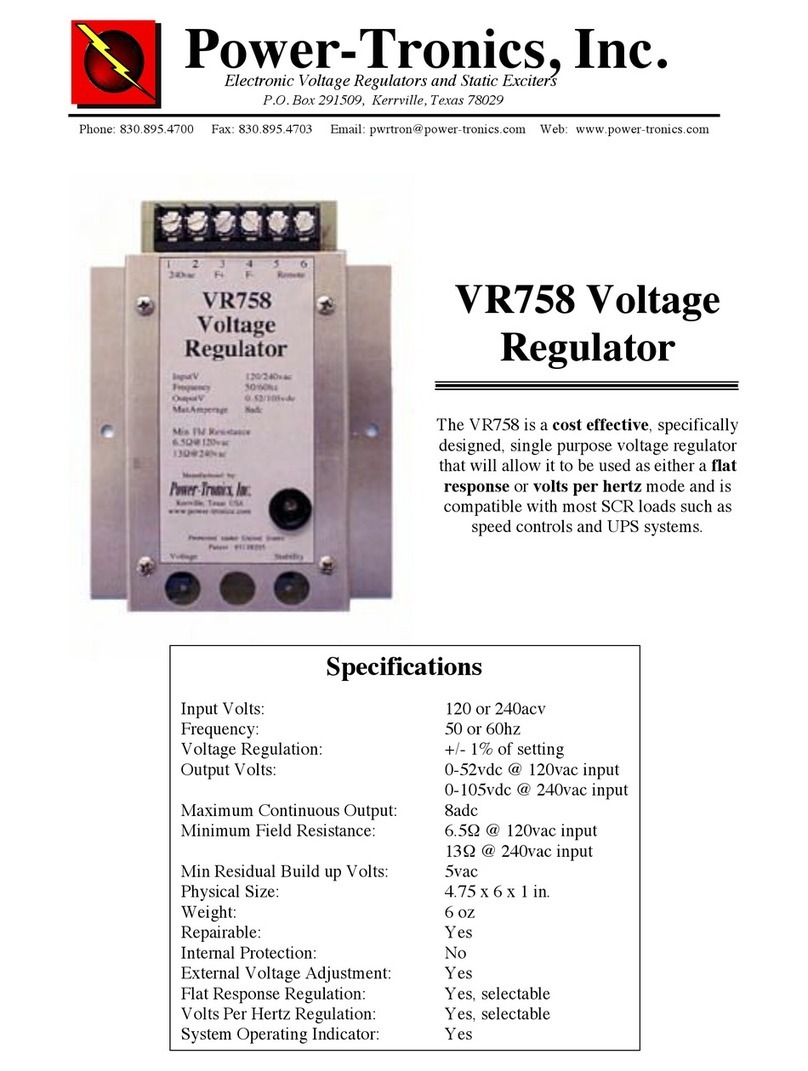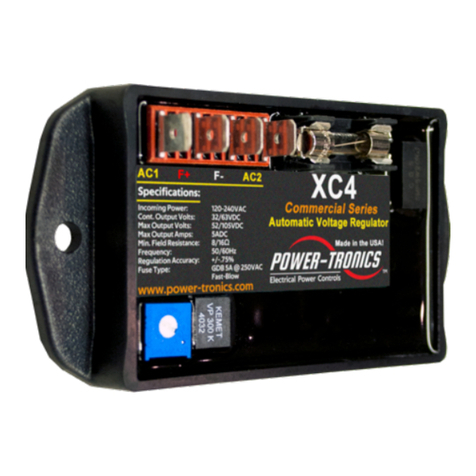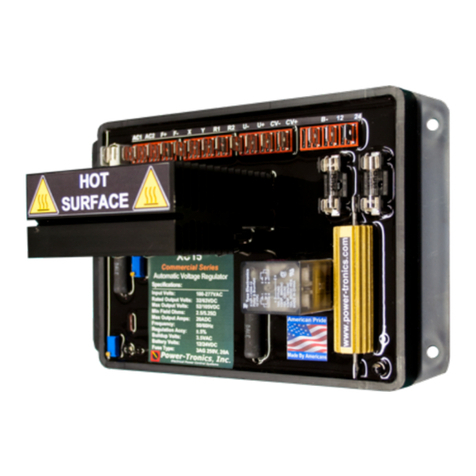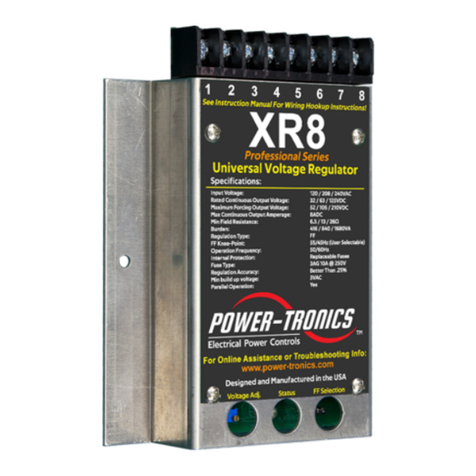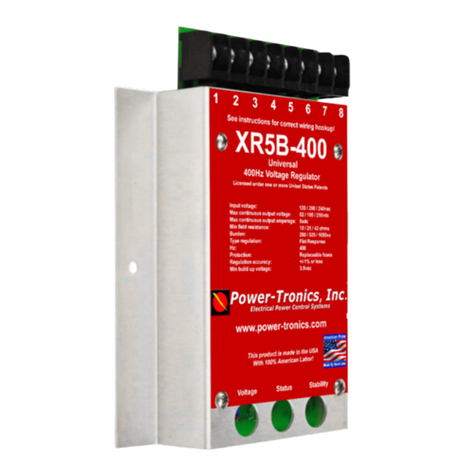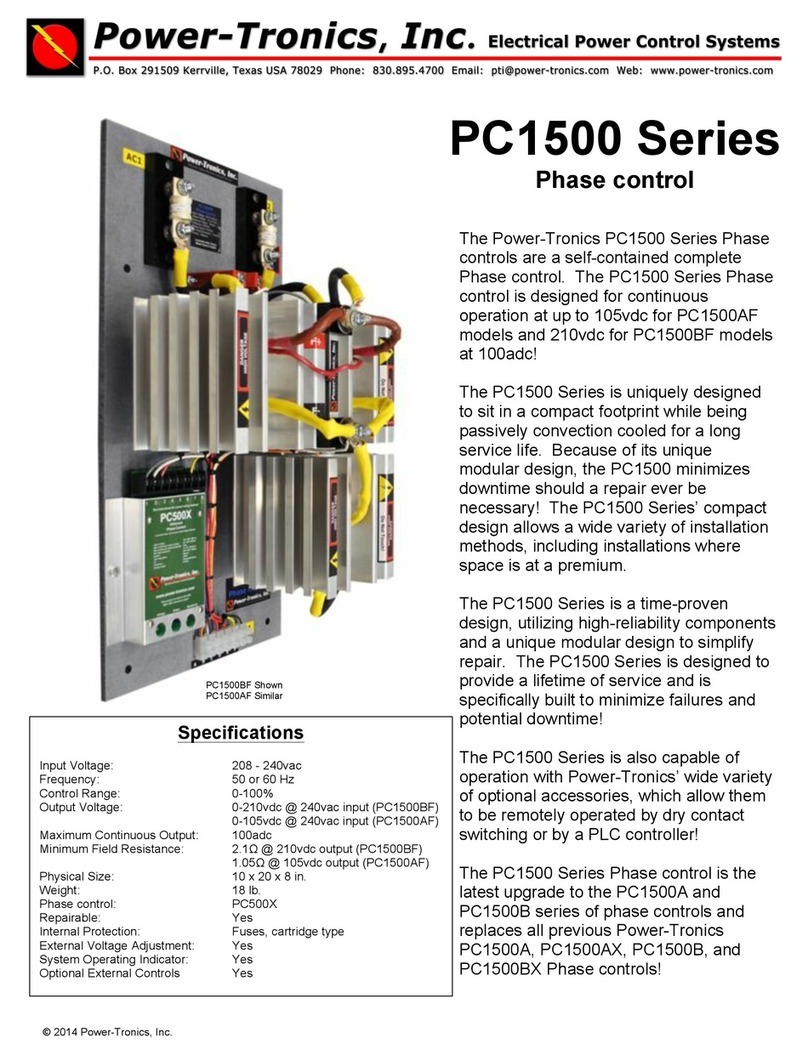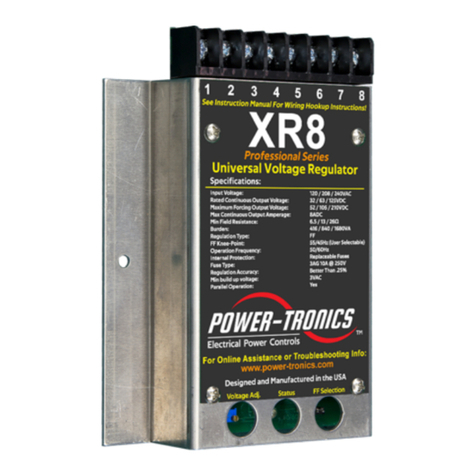Note about Field Resistance:
• When measuring field resistance on a brushless generator, simply measure the resistance of the
exciter field through your field leads with a multimeter.
• When measuring field resistance on a brush-type generator, measure the resistance through both
the field leads as well as directly on the slip rings themselves. The readings you obtain should
ideally be the same, but no more than 1% difference. If you show more than 1% difference in
reading your generator has brush and ring contact problems and will need cleaning or
maintenance before installing the XC14/XC15. Failure to correct brush and ring contact
problems will result in severe damage to the voltage regulator as well as possible
PERMANENT damage to the slip rings themselves! NEVER use emery cloth, carborundum
stones, “comm sticks”, or Tuner cleaner to dress or clean slip rings. They will make a bad
problem much, much worse! Only use Garnet or Flint sandpaper and clean with a clean rag
soaked with Acetone for best results!
If you do not have any of the specifications of your generator’s exciter, or if you
don’t know where to start when trying to determine your exciter specs, please see
the section below for instructions on measuring and calculating your exciter
specifications.
• Measure your exciter field resistance using a multimeter on your field leads.
Record this value. If you have a brush-type generator, also take a resistance
reading on your slip rings: the value you obtain on the slip rings should be no
more than 1% difference from the value you obtained through the field leads.
• Next, start and run the generator and apply 12V from a battery through your
field leads and record the AC voltage produced by the generator. To
determine your full load exciter field voltage, use the following formula:
EExc. =
Where EGen.Conf.is your Generator’s configured voltage (e.g.: 120, 208, 240,
480V, etc.), EGen.Output is your recorded output voltage, and EBattery is your battery
voltage (12V usually).
• Next, calculate your maximum exciter field amperage using your measured
field resistance and your calculated exciter voltage using the following formula:
Where Iis your maximum exciter field current, Eis your calculated field
voltage from the above formula, and Ris your measured field resistance.
Using the values you just measured and calculated, see the
specifications on the previous page to determine whether the
XC14/XC15 is the correct product for your application.
